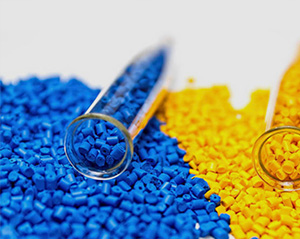Flame retardants are used to improve the flame resistance of molecular materials
Release date:2022-04-26 Author:翊成网络g Click:
Flame retardants are used to improve the flame resistance of molecular materials, by increasing the ignition point of molecular materials or reducing the burning speed of materials, thereby increasing rescue time, saving lives and reducing losses.
According to the structure, flame retardants can be divided into macromolecular polymeric flame retardants and small molecule flame retardants; according to the method of use, they can be divided into additive flame retardants and reactive flame retardants; according to whether the material contains halogen, it can be divided into For halogen flame retardants and halogen-free flame retardants. However, additive flame retardants are mostly used in thermoplastic polymer materials, which do not chemically react with other components in the material, and only exist in the polymer material in a physical way. Reactive flame retardants are mostly used in thermosetting polymer materials, participating in the chemical reaction of synthesizing polymer materials and becoming the structural unit of polymer materials.

When the polymer material is ignited by an open flame, a violent oxidation reaction will occur, releasing a large amount of hydroxyl groups. Since the hydroxyl group is very active, it is easy to combine with other substances, and after the combination, water and other organic substances are formed. Other organic matter and oxygen are further combined and decomposed to form new organic matter. In this series of cyclic reactions, combustion continues.
How do flame retardants work in this process? According to the three major elements of combustion - combustibles, combustion-supporting substances and ignition sources, the flame retardant principle of flame retardants can be summarized as follows:
1. Flame retardant is achieved by absorbing heat, for example, the inorganic flame retardant aluminum hydroxide is decomposed at high temperature, releasing crystal water, which evaporates into water vapor. This process absorbs a lot of heat, lowering the temperature of the material's surface and making it flame retardant.
2. By generating non-flammable gas to dilute oxygen and slow down the combustion speed, such as aluminum hydroxide flame retardant, the water vapor generated can reduce the concentration of oxygen around the material and inhibit the spread of fire.
3. A dense covering layer is formed on the surface of the material to isolate the material from contact with oxygen, such as phosphorus-based flame retardants, which will become a more stable cross-linked solid substance or a carbonized layer under high temperature conditions to wrap the material and prevent it from continuing. combustion.
4. Capture the free radicals involved in the combustion reaction and inhibit the free radical chain reaction, such as brominated flame retardants. Under high temperature conditions, when the polymer material is thermally decomposed, the brominated flame retardants and thermal decomposition products enter the gas phase combustion zone at the same time, capturing The free radicals in the gas phase combustion zone inhibit the free radical chain reaction, thereby preventing the flame propagation.

 Language
Language






 选择语言
选择语言

 苏公网安备 32100302010866号
苏公网安备 32100302010866号